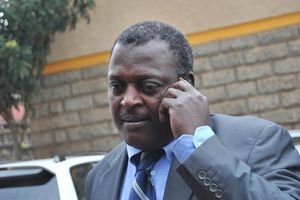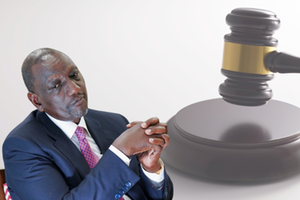Breaking: Autopsy reveals how Cyrus Jirongo died
Premium
What you need to know about SpaceX's 'Demo-2' mission

NASA astronauts Douglas Hurley, left, and Robert Behnken, wearing SpaceX spacesuits depart the Neil A. Armstrong Operations and Checkout Building for Launch Complex 39A during a dress rehearsal prior to the Demo-2 mission launch at NASA’s Kennedy Space Center in Florida on May 23, 2020. PHOTO | BILL INGALLS | NASA
What you need to know:
- Bob Behnken, 49, and Douglas Hurley, 53, former military test pilots who joined NASA in 2000, are to blast off from historic Launch Pad 39A on a two-stage SpaceX Falcon 9 rocket.
- NASA has tentatively scheduled the launch for Saturday afternoon but will assess the weather situation that morning and may decide to push the flight back to Sunday or even a later date.
SpaceX's "Demo-2" mission from NASA's Kennedy Space Center in Florida this weekend will be the first flight with astronauts aboard the Crew Dragon capsule built by entrepreneur Elon Musk's commercial space company.
SpaceX conducted a successful test flight of Crew Dragon to the International Space Station (ISS) in March 2019 with a sensor-laden mannequin on board named Ripley, after the character played by Sigourney Weaver in the "Alien" movies.
Bob Behnken, 49, and Douglas Hurley, 53, former military test pilots who joined NASA in 2000, are to blast off from historic Launch Pad 39A on a two-stage SpaceX Falcon 9 rocket.
NASA has tentatively scheduled the launch for Saturday afternoon but will assess the weather situation that morning and may decide to push the flight back to Sunday or even a later date.
Wednesday's scheduled flight was scrubbed 17 minutes before blastoff because of weather concerns.
It will be the first crewed launch from US soil of a US-made rocket since the space shuttle program ended in 2011 and the first ever by a private company.
Crew Dragon is scheduled to dock with the ISS about 19 hours after liftoff if Saturday's launch goes ahead.
Behnken and Hurley, veterans of two space shuttle missions each, have been in quarantine for more than two weeks and have been regularly tested for Covid-19.
On launch day, they are to be served a hearty breakfast and undergo final medical checks.
About four hours before liftoff, the pair will don their futuristic SpaceX-designed spacesuits and say goodbye to their wives -- both former astronauts -- and children.
The astronauts will then be driven to Launch Pad 39A, which was used for Apollo 11's historic 1969 trip to the Moon, in a Model X electric car built by Tesla, one of Musk's other companies.
After the 20-minute drive, Behnken and Hurley will ride an elevator to the Crew Dragon capsule sitting atop the Falcon 9 rocket.
The astronauts will be strapped into their seats by ground technicians and begin final preparations.
About two hours before liftoff, the hatch will be closed on the capsule and the astronauts will arm the escape system to be used in the event of an emergency during launch.
Fueling of the rocket with propellant begins 45 minutes before liftoff.
Weather permitting, blastoff is scheduled for 3:22 pm (1922 GMT) on Saturday.
President Donald Trump flew to Florida for Wednesday's launch and tweeted after it was scrubbed that he would return again for the next attempt.
The usual thousands of invited guests for a rocket launch will be absent this time because of the coronavirus pandemic.
Two minutes and 33 seconds after liftoff, Falcon 9's reusable first stage booster will separate and began its return to Earth, where it is planned to land upright off the Florida coast on a barge baptized "Of Course I Still Love You."
Twelve minutes after liftoff the second stage of the rocket separates from Crew Dragon.
Once in orbit, the astronauts are to carry out a number of checks of Crew Dragon on what is designed to be the final test flight before NASA certifies the capsule for regular crew flights.
During the next 19 hours, Crew Dragon will head for the ISS, which is orbiting at an average altitude of 400 kilometers above the Earth.
Crew Dragon will then dock autonomously with the ISS and Behnken and Hurley will join US astronaut Chris Cassidy and Russian cosmonauts Anatoly Ivanishin and Ivan Vagner aboard the orbiting space station.
The length of the stay of Behnken and Hurley aboard the ISS has not been determined yet but Crew Dragon can spend up to 114 days in space, or 16 weeks.
NASA administrator Jim Bridenstine has said they may return to Earth in early August.
After detaching from the ISS, Crew Dragon will begin its descent, splashing down in the Atlantic Ocean off the coast of Florida.
It will be slowed down by four large parachutes, the same method used for the return of NASA's Apollo capsules, although they landed in the Pacific.





